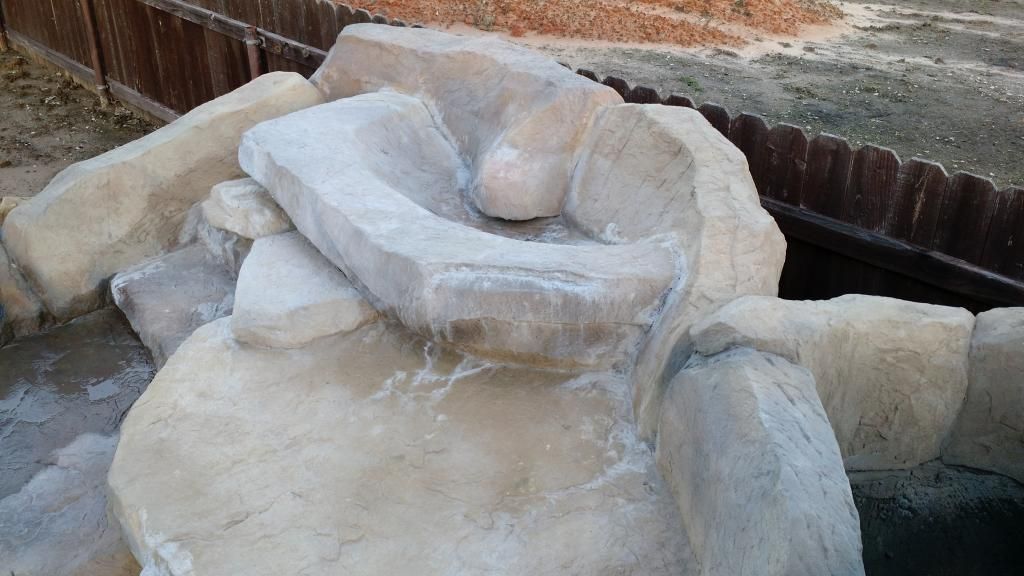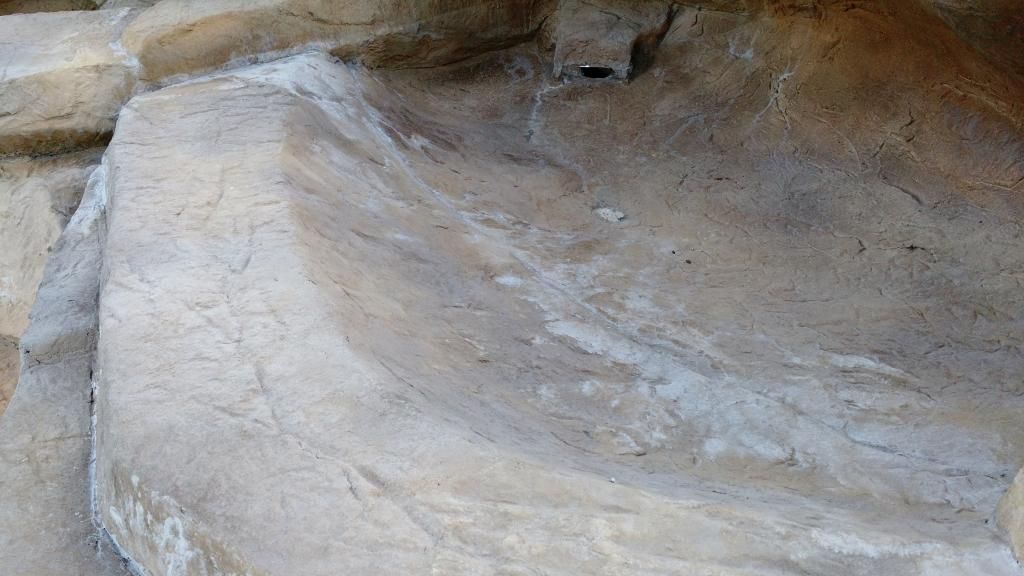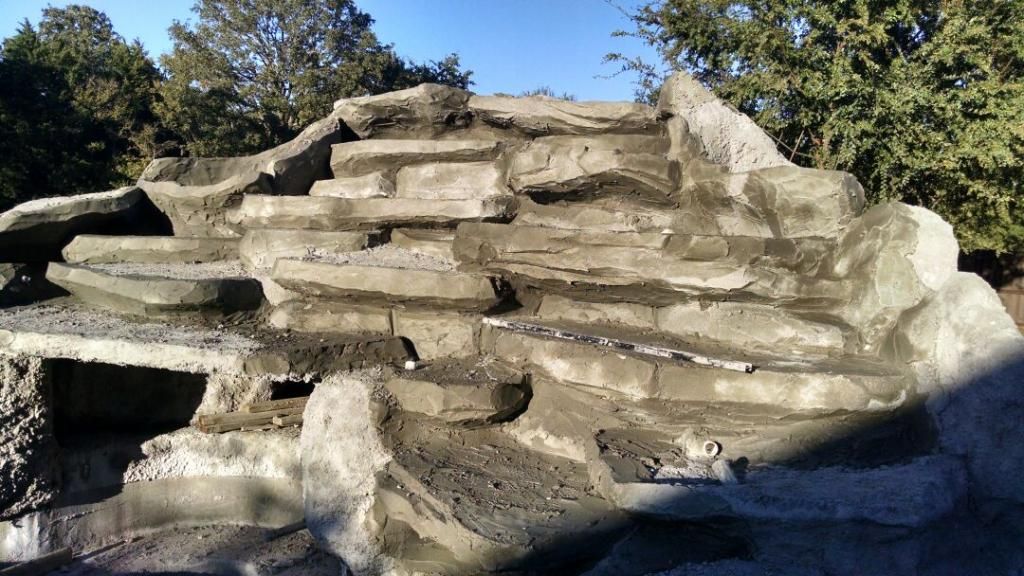We just finished up our pool in November complete with a slide/grotto/waterfall feature that was constructed entirely out of gunite.
When we had our first big cold snap a few weeks ago (it may be just a coincidence), I discovered when the waterfall was off, there was a white residue forming on the areas where water flowed. Some areas were more noticeable than others, but it has made a fairly noticeable effect of dulling down the colors of the waterfall, and in some areas you can see streaks of this white substance. (Pictures below).



I contacted the PB, and he contacted the sub who did the work. The sub said they were going to come up and take a look at it, and then the PB called and said he wanted to take a water sample (which I knew was coming). However, I felt pretty comfortable because I've been fairly on top of my levels ever since it was completed. Right now my levels are hovering around, and have been for the past few weeks:
pH: 7.5 to 7.6
FC: 3-5
CC: 0
TA: 70-80
CH: 225-250
CYA: 40
However, he just called and said, "The water tests came back and your alkalinity is 160." I kindly said I don't think so and asked where it was tested, and he said some pool superstore there in town, and that "The computers are fairly accurate. And your PH was high too. With Alkalinity that high, that can cause scaling." When I told him that I'm using a Taylor TF100 kit, considered to be the most trusted in the industry, he said, "Well sometimes those kits can be a little off."
I kindly said I don't think so and asked where it was tested, and he said some pool superstore there in town, and that "The computers are fairly accurate. And your PH was high too. With Alkalinity that high, that can cause scaling." When I told him that I'm using a Taylor TF100 kit, considered to be the most trusted in the industry, he said, "Well sometimes those kits can be a little off."
He said I should try to test it again when I get home.
Now, I'm kind of concerned. I posted a couple of weeks ago that I left my test kit outside overnight and if that would have any effect, and the general consensus was most likely not.
So I'm going to test it again tonight when I get home. I might also take a water sample to a small time pool store close by to see what they say. Right now I feel like its my word against this "pool superstore"s word, and I'm sure my PB is thinking that I don't know what I'm talking about and my levels are all off.
Any ideas?
When we had our first big cold snap a few weeks ago (it may be just a coincidence), I discovered when the waterfall was off, there was a white residue forming on the areas where water flowed. Some areas were more noticeable than others, but it has made a fairly noticeable effect of dulling down the colors of the waterfall, and in some areas you can see streaks of this white substance. (Pictures below).



I contacted the PB, and he contacted the sub who did the work. The sub said they were going to come up and take a look at it, and then the PB called and said he wanted to take a water sample (which I knew was coming). However, I felt pretty comfortable because I've been fairly on top of my levels ever since it was completed. Right now my levels are hovering around, and have been for the past few weeks:
pH: 7.5 to 7.6
FC: 3-5
CC: 0
TA: 70-80
CH: 225-250
CYA: 40
However, he just called and said, "The water tests came back and your alkalinity is 160."
He said I should try to test it again when I get home.
Now, I'm kind of concerned. I posted a couple of weeks ago that I left my test kit outside overnight and if that would have any effect, and the general consensus was most likely not.
So I'm going to test it again tonight when I get home. I might also take a water sample to a small time pool store close by to see what they say. Right now I feel like its my word against this "pool superstore"s word, and I'm sure my PB is thinking that I don't know what I'm talking about and my levels are all off.
Any ideas?


